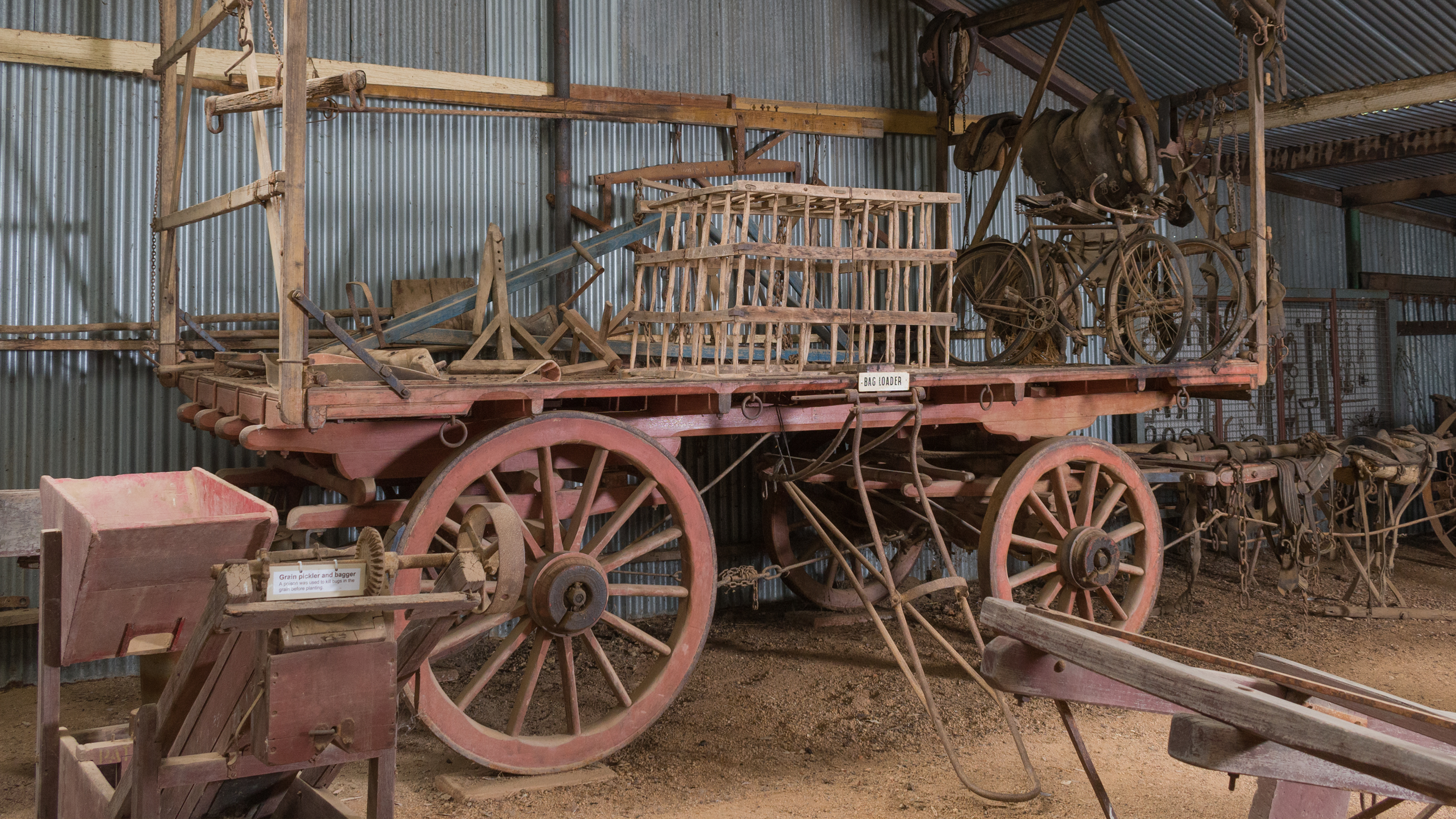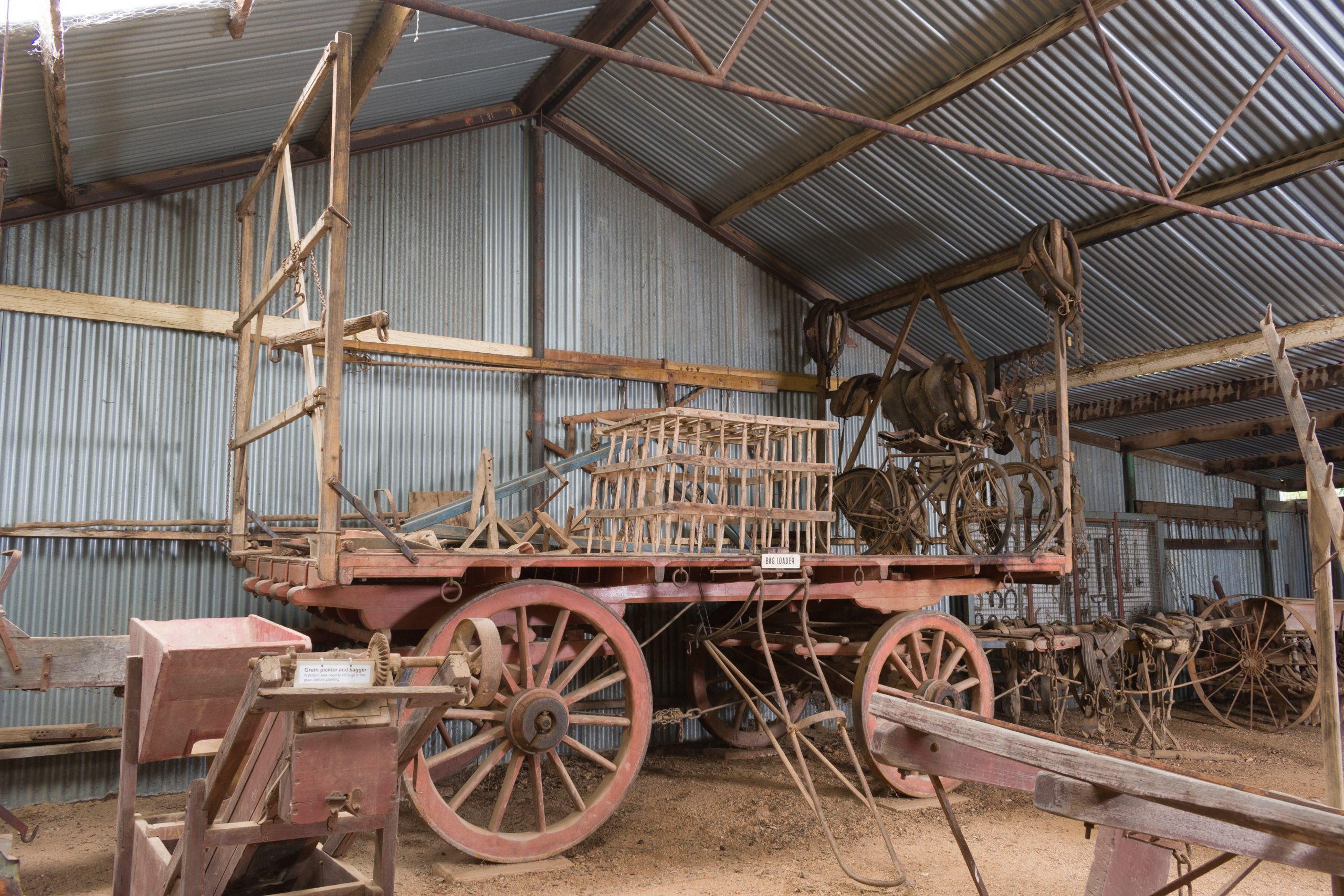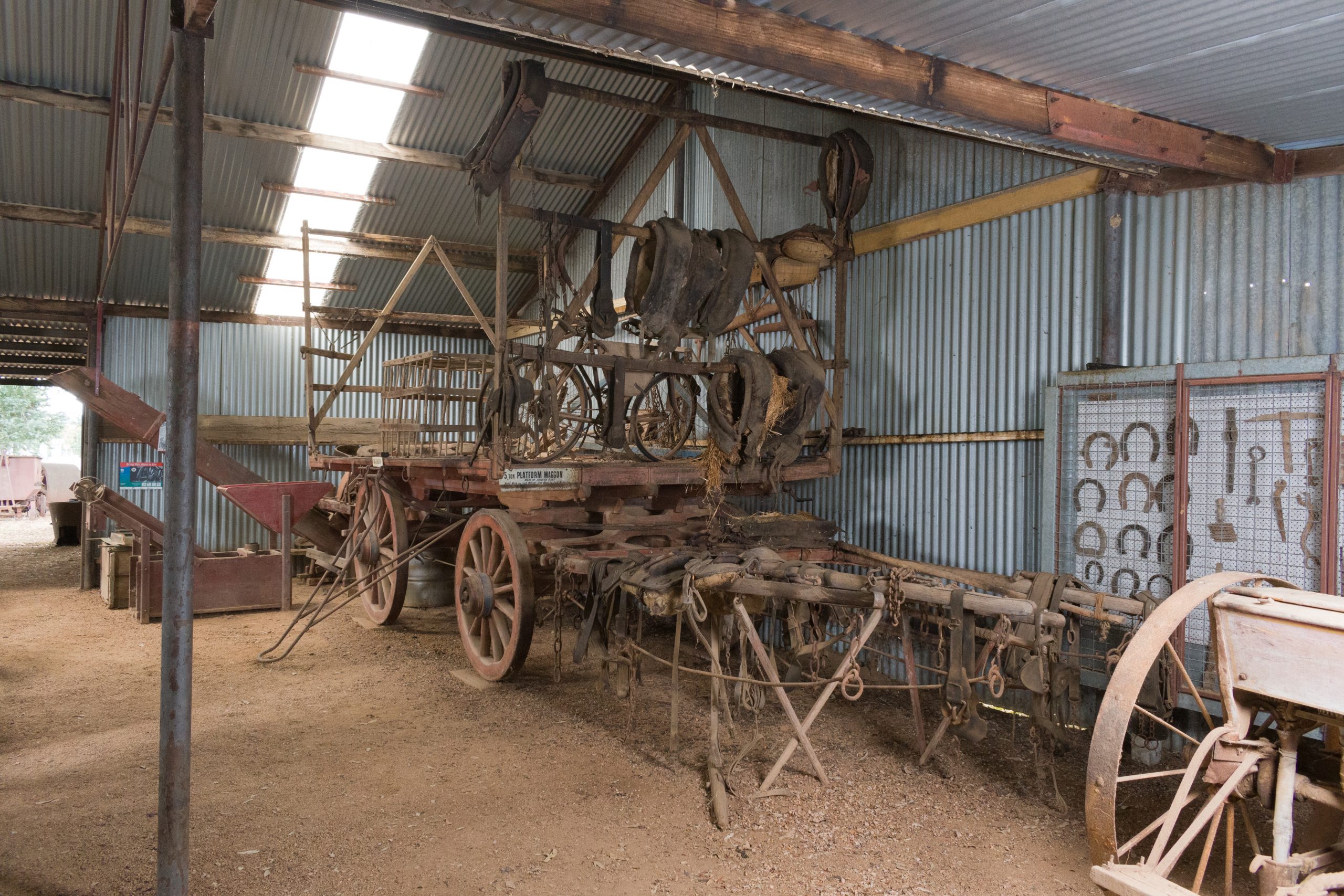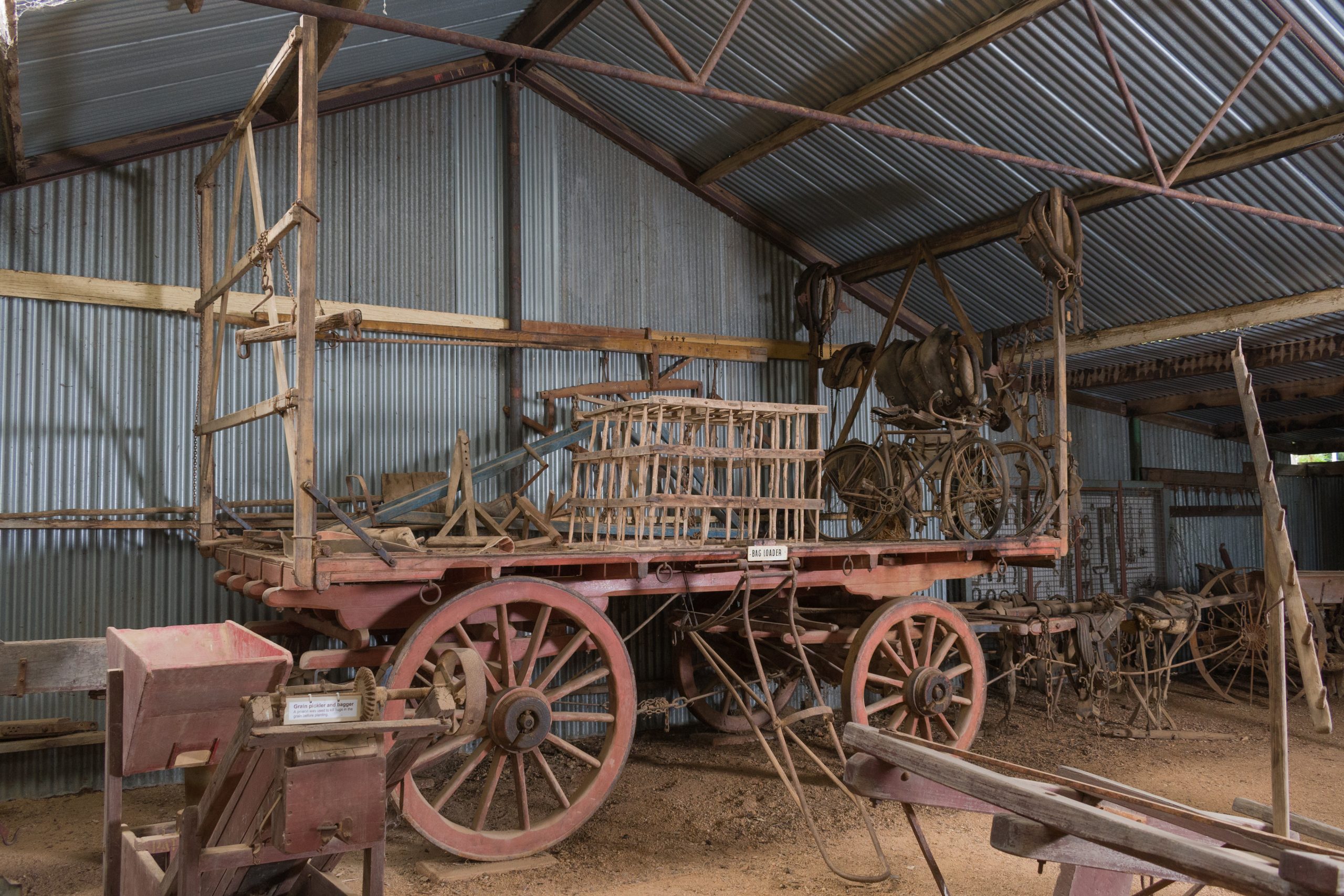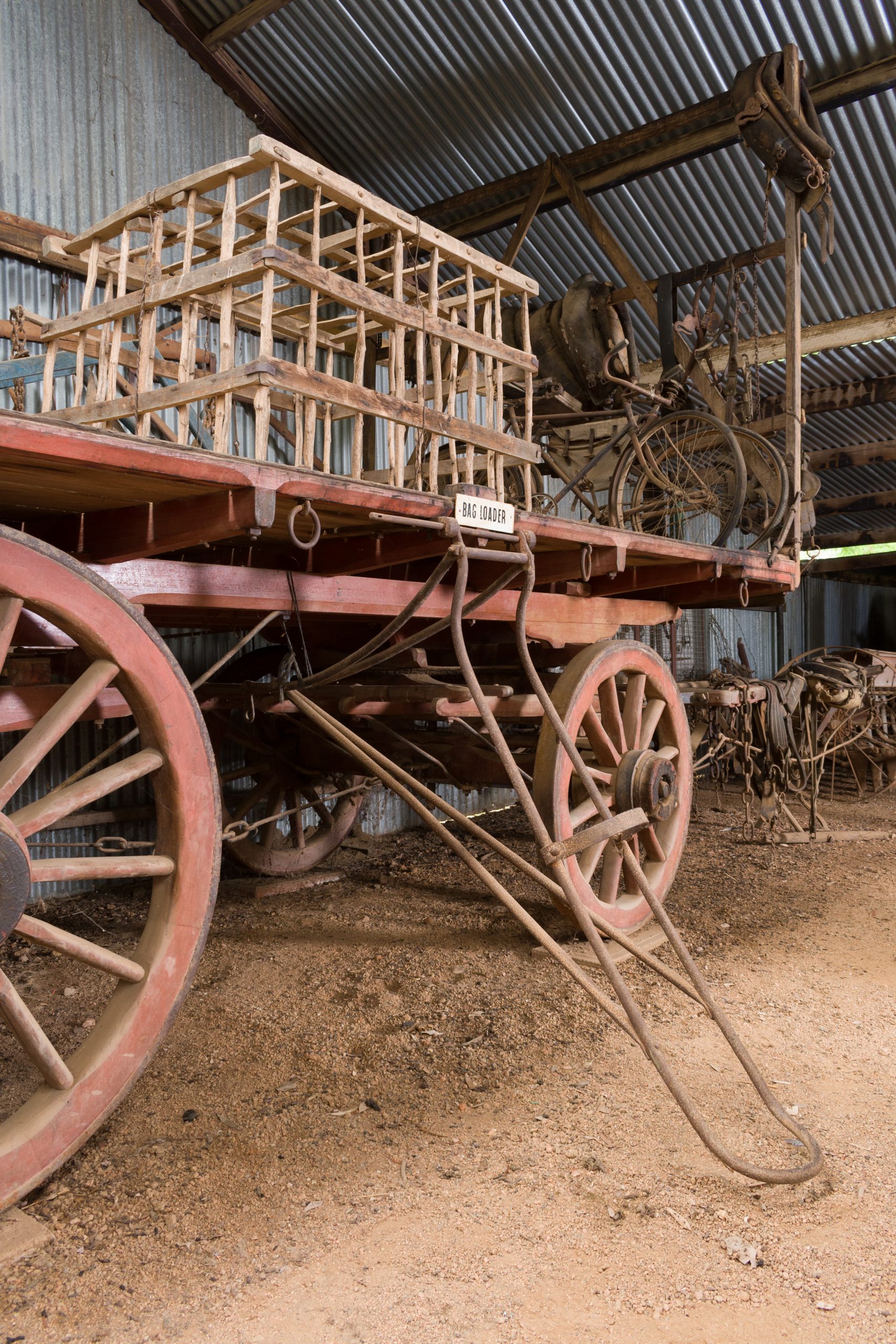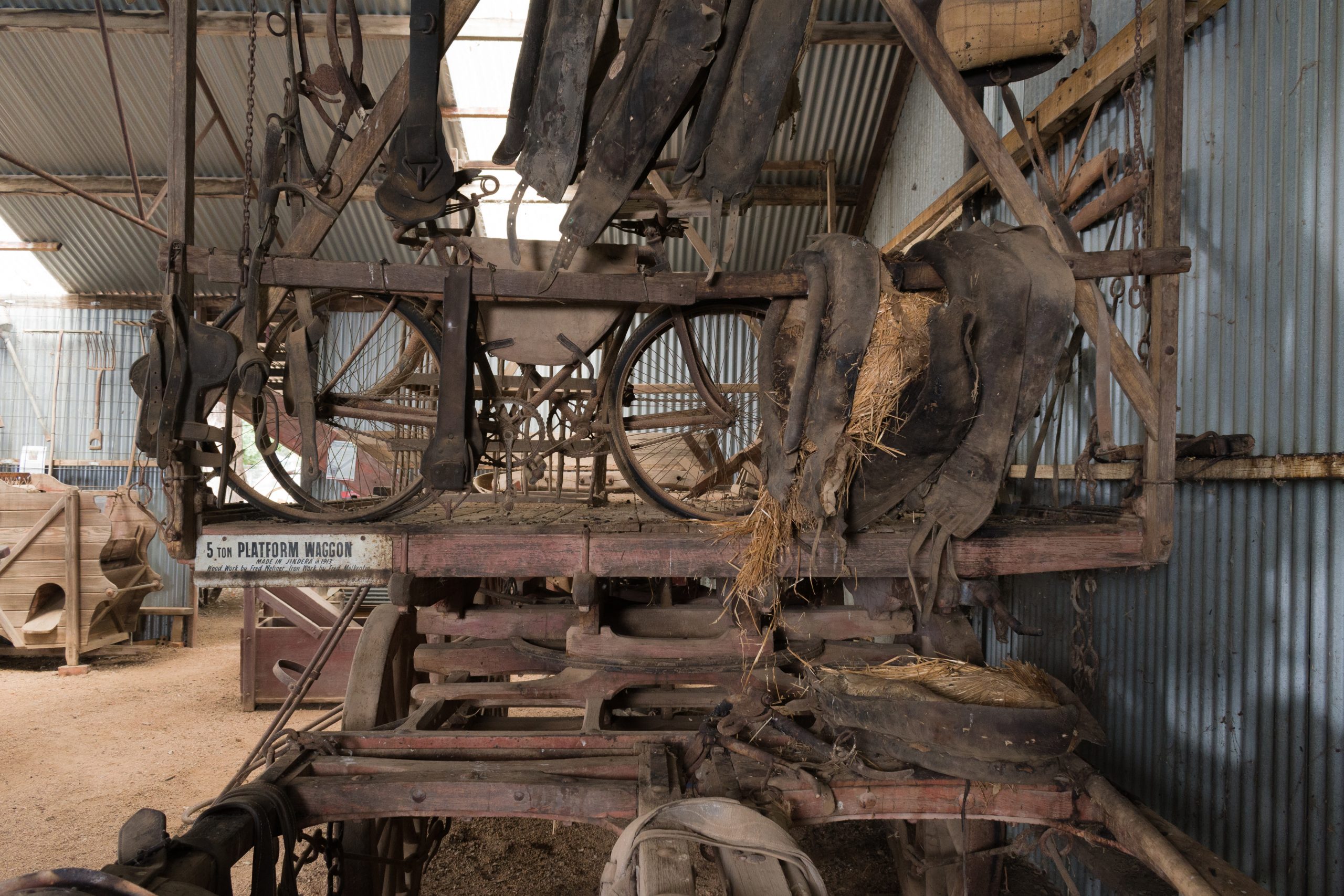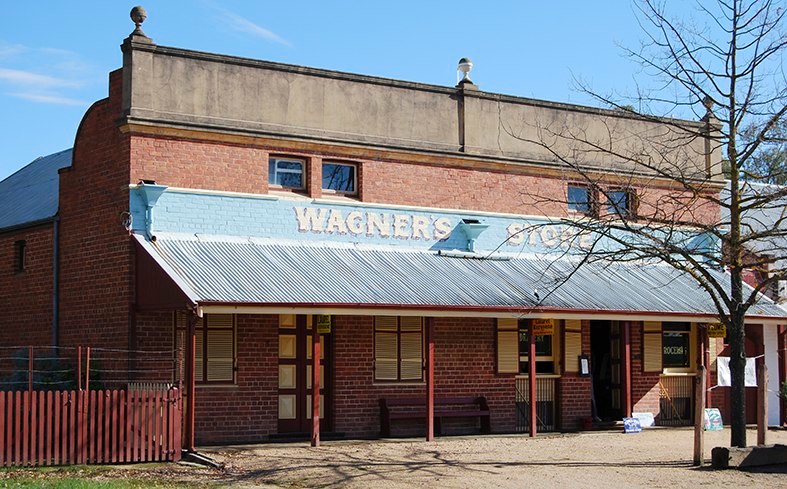Circling the Wagons
Migration, Agriculture and Industry
Migration is the result of push and pull factors and the German settlers who eventually ended their journey in the district of Jindera in the 1860s experienced both.
Schism in the Lutheran church and economic factors drove the German settlers from Prussia to the colony of South Australia and the attractiveness of the NSW Robertson Land Acts would subsequently pull them from South Australia to the southern Riverina. The wagons were not just transport during the trip but the family’s home whilst on the road and residence until their first house was built.
Although this platform wagon was not one of those that made the trek from South Australia its links to the families that made the trek are impeccable.
The wagon was built in 1913 by Fred Wehner (1873-1957) wheelwright and C. F. (Fred) Molkentin, (1877-1945) blacksmith. Fred Molkentin was the son of Michael Molkentin (1841-1885) the first blacksmith in Jindera and Fred Wehner would marry Caroline Bertha Molkentin (1872-1951) Fred Molkentin’s cousin.
The wagon was horse-drawn and could carry 5 tons of agricultural produce, such as wheat, from farms to the railway siding. The small front wheels allowed for sharp turning and the high rear wheels supported the heavy load. The Heppner Bag Loader attached to the side allowed for easy loading and off-loading of heavy sacks of wheat.
Although this wagon did not carry the German settlers to Jindera it did come to carry the fruits of that journey and their hard work. It is fitting that the last item constructed by Fred Molkentin before he left Jindera permanently for South Australia was this wagon – an encircling of the migration story and fusion of agriculture and industry.


